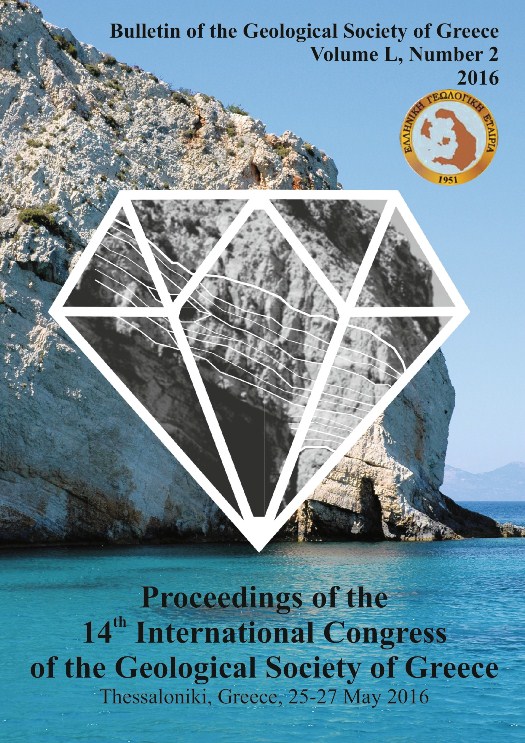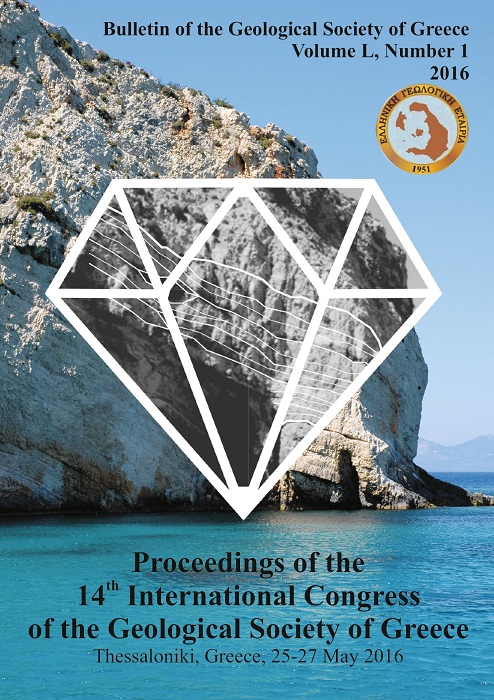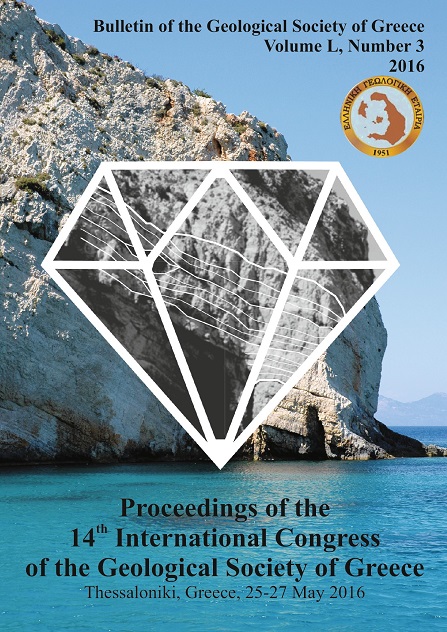APPLICATION OF TERRESTRIAL LASER SCANNING (LIDAR) IN ROCK SLOPE STABILITY. ΑΝ ΕXAMPLE FROM NORTHERN GREECE

Περίληψη
Αντικείμενο της παρούσας εργασίας αποτελεί η εφαρμογή της μεθοδολογίας σάρωσης με τη χρήση της συσκευής LiDar προσαρμοσμένης στη διερεύνηση των μηχανισμών αστοχίας των ανατολικών πρανών της παράκτιας ζώνης του όρους Άθως. Εξετάζεται η εφαρμογή της συγκεκριμένης μεθοδολογίας για την τρισδιάστατη αποτύπωση των δομών της βραχόμαζας και την επέκταση της υπαίθριας έρευνας σε θέσεις με δυσκολίες πρόσβασης. Γίνεται τέλος σύγκριση των αποτελεσμάτων της ανάλυσης ευστάθειας με τα αντίστοιχα αποτελέσματα που διεξήχθησαν με δεδομένα τις μετρήσεις της υπαίθριας έρευνας.
Λεπτομέρειες άρθρου
- Πώς να δημιουργήσετε Αναφορές
-
Ampatzi, G., Chatzigogos, N., Makedon, M., Papathanassiou, G., & Marinos, V. (2016). APPLICATION OF TERRESTRIAL LASER SCANNING (LIDAR) IN ROCK SLOPE STABILITY. ΑΝ ΕXAMPLE FROM NORTHERN GREECE. Δελτίο της Ελληνικής Γεωλογικής Εταιρείας, 50(2), 586–595. https://doi.org/10.12681/bgsg.11763
- Ενότητα
- Engineering Geology, Hydrogeology, Urban Geology

Αυτή η εργασία είναι αδειοδοτημένη υπό το CC Αναφορά Δημιουργού – Μη Εμπορική Χρήση 4.0.
Οι συγγραφείς θα πρέπει να είναι σύμφωνοι με τα παρακάτω: Οι συγγραφείς των άρθρων που δημοσιεύονται στο περιοδικό διατηρούν τα δικαιώματα πνευματικής ιδιοκτησίας επί των άρθρων τους, δίνοντας στο περιοδικό το δικαίωμα της πρώτης δημοσίευσης. Άρθρα που δημοσιεύονται στο περιοδικό διατίθενται με άδεια Creative Commons 4.0 Non Commercial και σύμφωνα με την οποία μπορούν να χρησιμοποιούνται ελεύθερα, με αναφορά στο/στη συγγραφέα και στην πρώτη δημοσίευση για μη κερδοσκοπικούς σκοπούς. Οι συγγραφείς μπορούν να: Μοιραστούν — αντιγράψουν και αναδιανέμουν το υλικό με κάθε μέσο και τρόπο, Προσαρμόσουν — αναμείξουν, τροποποιήσουν και δημιουργήσουν πάνω στο υλικό.






